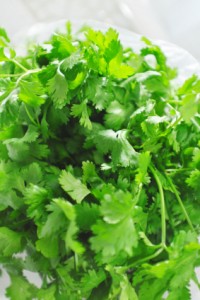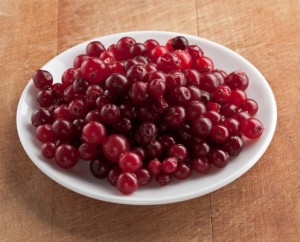 I got a big bunch of cilantro from my local food co-op this week and have been using it liberally in my salads, omelets, and of course smoothies. A small green leafy herb that’s often used to garnish, don’t take cilantro lightly, it packs a hefty nutritional punch.
I got a big bunch of cilantro from my local food co-op this week and have been using it liberally in my salads, omelets, and of course smoothies. A small green leafy herb that’s often used to garnish, don’t take cilantro lightly, it packs a hefty nutritional punch.
In this day and age where we find ourselves bombarded by toxins from every direction it’s important to get enough detoxification agents into our diet.
Cilantro is best known for its ability to detoxify heavy metals, in particular mercury from the body. Studies have shown that consuming large amounts of cilantro daily can actually mobilize mercury and other toxic metals from the central nervous system, which is why cilantro is often used with other herbs and supplements in chelation (removing heavy metals from the body) therapy.

 It’s no secret that I love to use various spices in my smoothies to boost nutrition and improve the taste. This recipe calls for one of my favorites, ginger. With ginger you get that signature peppery, sweet taste and a bunch of health benefits. Combined with a little spinach, frozen blueberries, and banana, and you’ll be rocking one healthy smoothie!
It’s no secret that I love to use various spices in my smoothies to boost nutrition and improve the taste. This recipe calls for one of my favorites, ginger. With ginger you get that signature peppery, sweet taste and a bunch of health benefits. Combined with a little spinach, frozen blueberries, and banana, and you’ll be rocking one healthy smoothie! I often hear complaints from people who are sick and tired of rotating between only spinach and kale in their green smoothies. News flash! There’s a wide variety of green leafy veggies to choose from. Arugula, radish greens, swiss chard, collards, beet greens, lettuce, and one of my personal favorites, dandelion greens.
I often hear complaints from people who are sick and tired of rotating between only spinach and kale in their green smoothies. News flash! There’s a wide variety of green leafy veggies to choose from. Arugula, radish greens, swiss chard, collards, beet greens, lettuce, and one of my personal favorites, dandelion greens. Try this delicious and highly nutritious cranberry berry smoothie as a tasty snack, sweet dessert, or healthy meal to start your day.
Try this delicious and highly nutritious cranberry berry smoothie as a tasty snack, sweet dessert, or healthy meal to start your day. Take your green smoothies to the next level by using green tea as the base. Unless you brew a super strong batch of green tea, you won’t notice the taste in your smoothie, but will reap all the wonderful health benefits green tea has to offer.
Take your green smoothies to the next level by using green tea as the base. Unless you brew a super strong batch of green tea, you won’t notice the taste in your smoothie, but will reap all the wonderful health benefits green tea has to offer. I’ve listed flax seeds or ground flax seed as an optional or add-on ingredient in several smoothie recipes, but this is the first to feature flax. Let’s get right into all the wonderful health benefits attributed to this superfood that records indicate having been cultivated as far back as 3000 BC.
I’ve listed flax seeds or ground flax seed as an optional or add-on ingredient in several smoothie recipes, but this is the first to feature flax. Let’s get right into all the wonderful health benefits attributed to this superfood that records indicate having been cultivated as far back as 3000 BC.